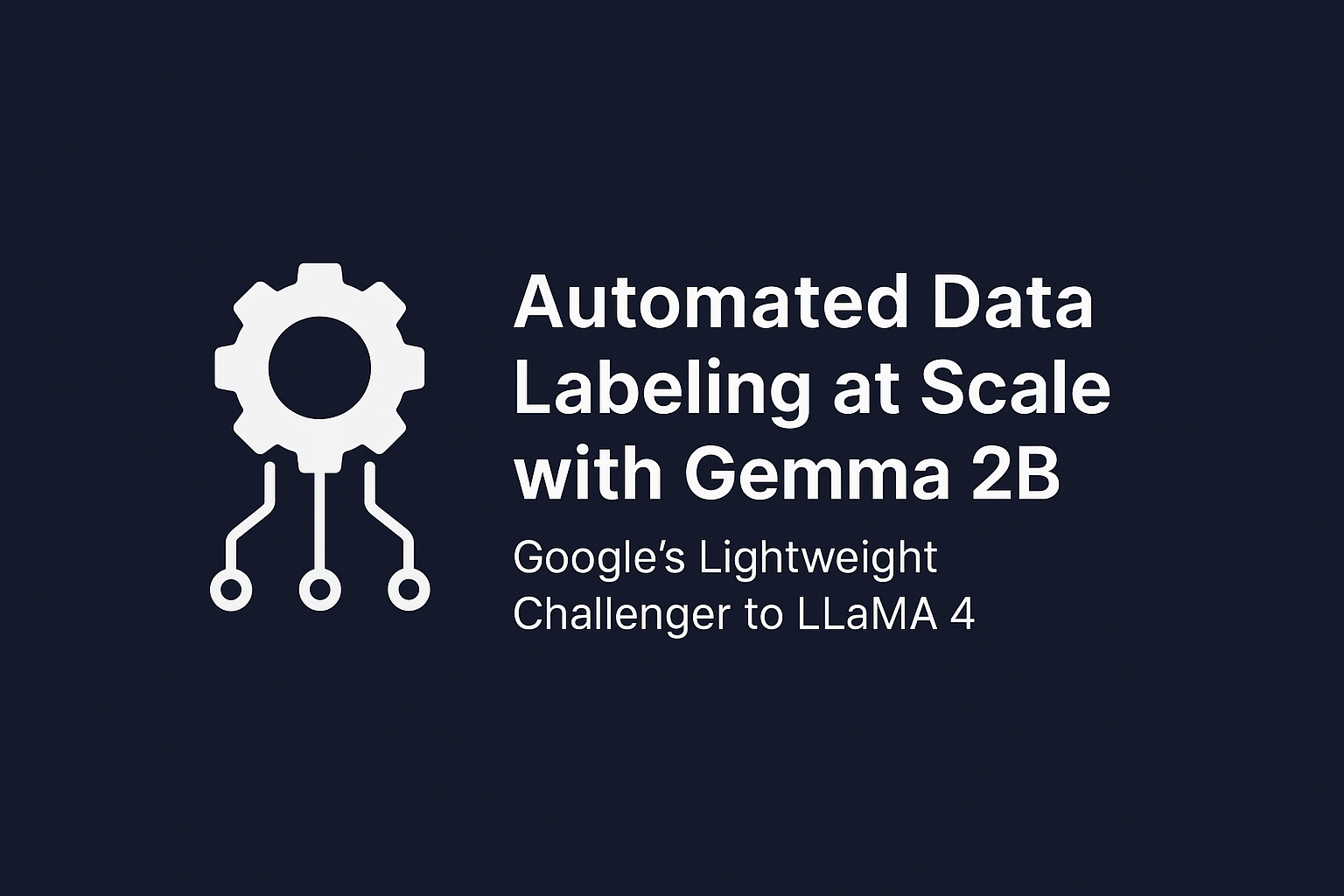
July 03, 2025
Automated Data Labeling at Scale with Gemma 2B: Google’s Lightweight Challenger to LLaMA 4
Automated Data Labeling at Scale with Gemma 2B: Google’s Lightweight Challenger to LLaMA 4
Do you ever feel drowning in unlabeled data, wondering how to prepare it for your machine learning model? I've been through it. A typical ML project's longest and toughest task is data labeling. What if you could give that task to a tiny, quick, and accurate AI?
Here comes Google's Gemma 2B model. The tiny, open-source, and surprisingly competent alternative to LLaMA 4 is ideal for developers who wish to automate data labeling at scale without breaking the bank or overloading their GPUs. I will teach you how to utilize Gemma 2B to create a completely automated data labeling pipeline in your next ML project.
Why Bother with Automated Labeling?
Let me explain why I began researching this before digging into the coding. Labeling data manually is like pulling teeth. You may spend hours doing it yourself or hire annotators and hope they are consistent. I swiftly discovered I did not have time or resources to categorize thousands of support requests while working on a sentiment analysis model.
Then I thought, Why not use a language model? I chose Gemma 2B since it was intelligent enough to understand textual context and light enough to run on my system.
Meet Gemma 2B: Small but Mighty
Gemma 2B is a Google open-weight model. Good thing it is not aiming to be the largest model on the street. Its 2 billion parameters optimize it for quick inference on user hardware, making it excellent for labeling workloads that prioritize speed and throughput above accuracy.
It ran well on my mid-range GPU and created high-quality labels out of the box. Like a small AI assistant you can afford to maintain.
Setting Up: Quick and Easy
Starting Gemma 2B is surprisingly easy. I started a Python environment and installed packages:
pip install transformers accelerate
I then loaded the model using Hugging Face's transformers library:
from transformers import AutoTokenizer, AutoModelForCausalLM
model_name = "google/gemma-2b"
tokenizer = AutoTokenizer.from_pretrained(model_name)
model = AutoModelForCausalLM.from_pretrained(model_name)And just like that, I was ready to start labeling.
Automating the Labeling Workflow
Let Gemma 2B label; the most exciting part. I want to classify customer feedback comments by sentiment.
Here’s what my raw data looked like:
texts = [
"Absolutely love the new features!",
"I’m disappointed with the service lately.",
"Delivery was okay, but the packaging was poor."
]
I gave the model a basic prompt. This prompt provides it enough guidance to return usable labels:
def generate_label(text):
prompt = f"Label the sentiment of the following text as Positive, Negative, or Neutral:\n{text}"
inputs = tokenizer(prompt, return_tensors="pt")
outputs = model.generate(**inputs, max_new_tokens=10)
label = tokenizer.decode(outputs[0], skip_special_tokens=True)
return label.strip()
Running the labeling loop was surprisingly smooth:
for text in texts:
label = generate_label(text)
print(f"Text: {text}\nPredicted Label: {label}\n")Gemma provided clear sentiment labels that I could instantly add to my dataset.
Adapting and Learning from Feedback
I realized that user feedback and edge cases required me to refine outcomes even with strong outputs. When a label seemed odd, I changed the prompt or added more information in prompt.
Adding a feedback system that modifies the labeling logic based on a few incorrect labels is my next step. Now, Gemma's constancy impressed me without that. Not just guessing, it reasoned.
Bringing It All Together
After automated sentiment labeling, I classified support ticket types, tagged emails, and organized product reviews. Process was the same every time:
- Create a prompt.
- Feed text.
- Retrieve a relevant label.
Batching and GPU acceleration let me identify hundreds in under an hour. Speed makes a difficult labeling job easy on your to-do list.
Final Thoughts
I was not expecting much from a little model like Gemma 2B for automatic labeling. I was truly amazed. Light and quick to install, it performs with the proper speed and intelligence.
If you require labeled data for NLP tasks in a machine learning project, try Gemma 2B. No labeling staff or large cloud setup needed. One smart model, some nice prompts, and some curiosity.
I promise your future self and labeled dataset will thank you for trying it.
741 views
